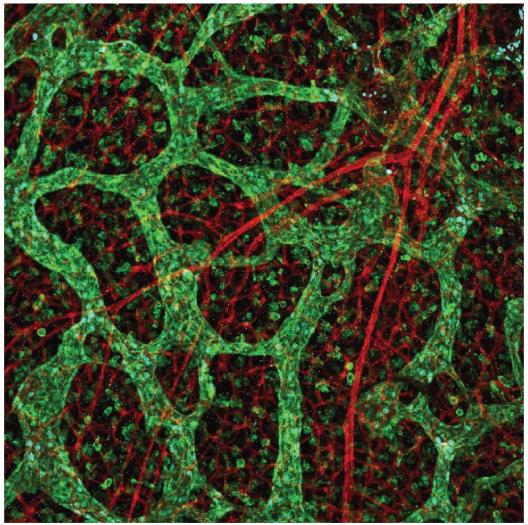Prof. Dr. Stefan Schulte-Merker
A unique set of lymphatic endothelial cells at the neuro-vascular interface

Cell Biology / Molecular Biology
Development
Vascular Biology / Angiogenesis
Lymphatic vessels serve key functions during development, adult life and pathophysiological states. Lined by endothelial cells, they take up interstitial fluid and macromolecules. We have recently identified a population of lymphatic endothelial cells (LECs) which populate the meningeal layer of the zebrafish brain hemisphere. Strikingly, these cells constitute a network of single LECs, that serve as scavenger endothelial cells to remove substances from the brain parenchyma. The brain itself does not harbour lymphatic ECs, but apparently this unique set of LECs is extremely efficient (much more so than microglia within the brain) to eliminate waste products and foreign substances. Furthermore, these cells can invade the brain parenchyma upon vascular injury within the brain, and support the organism to repair injury-induced damage. The project is centred around understanding whether these LECs also respond to neurological injury, and how these cells accomplish the remarkable feature of both acting as scavenger cells and as a pool of ‘emergency repair’ cells for the brain.

Vita
- 1995-1998: Junior Group Leader, Max-Planck-Institut Developmental Biology, Tübingen, Germany
- 1998-2003: Director Genetics, Exelixis Deutschland, Tübingen, Germany
- 2003-2004: Senior Director Translational Genetics, Exelixis Inc., San Francisco, USA
- 2004-2014: Hubrecht Institute for Developmental and Stem Cell Biology (Utrecht, the NL)
- Since 2014: Professor, University of Münster, Inst. Cardiovascular Organogenesis and Regeneration, Germany
Selected references
van Lessen M, Shibata-Germanos S, van Impel A, Hawkins TA, Rihel J, Schulte-Merker S. (2017) Intracellular uptake of macromolecules by brain lymphatic endothelial cells during zebrafish embryonic development. eLife. 2017 May 12;6. pii: e25932. doi: 10.7554/eLife.25932.
Roukens MG, Peterson-Maduro J, Padberg Y, Jeltsch M, Leppänen V-M, Bos FL, Alitalo K, Schulte-Merker S, Schulte D (2015). Functional dissection of the CCBE1 protein: a crucial requirement for the collagen repeat domain. Circulation Research, 116(10), 1660-9.
Schulte‐Merker S, Sabine A and Petrova T (2011). Mechanisms of lymphatic vascular morphogenesis in development, physiology and human disease. Journal of Cell Biology 193, 607-618.
Bos FL, Caunt M, Peterson-Maduro J, Planas-Paz L, Kowalski , Karpanen T, van Impel A, Tong R, Ernst JA, Korving J, van Es JH, Lammert E, Duckers HJ and Schulte-Merker S (2011). CCBE1 Is Essential for Mammalian Lymphatic Vascular Development and Enhances the Lymphangiogneic Effect of Vascular Endothelial Growth Factor-C In Vivo. Circulation Research109(5): 486-91.
Hogan BM, Bos F, Bussmann J, Witte M, Chi N, Duckers H, Schulte-Merker S (2009) Ccbe1 is required for embryonic lymphangiogenesis and venous sprouting. Nature Genetics 41: 396-398.
Link
